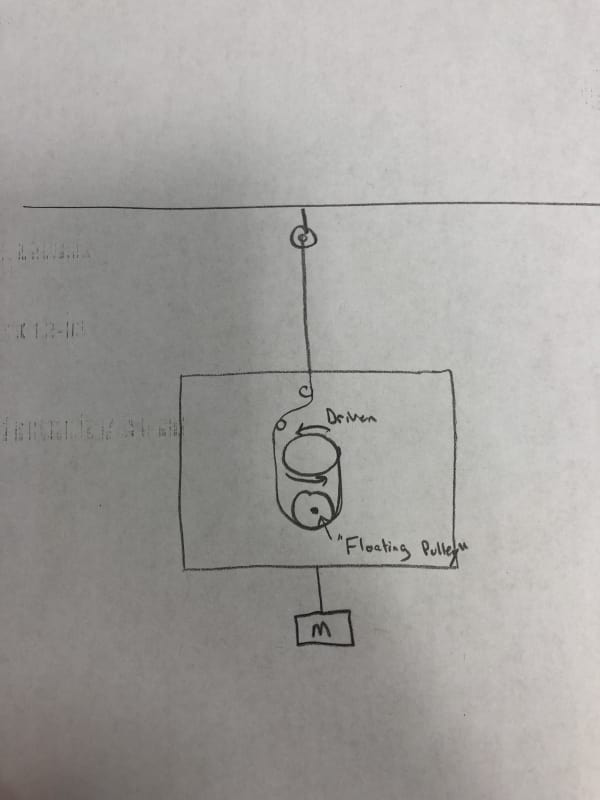jd93
Mechanical
- Jan 15, 2019
- 1
I can't figure out this seemingly simple problem. I've sketched a very rough idea of what I'm trying to figure out.
The sketch is basically an enclosed lift with a pulley and motor system hanging from a ceiling. The cable runs down from the ceiling, around the floating pulley, and is wrapped around a shaft by a motor. For simplicity ignore potential leaning from the center of gravity being off, moments caused by spooling on the motor shaft etc. My basic question is that when lifting, would the motor still experience a mechanical advantage from the pulley (i.e. M/2) even though it is only fixed at one end?

The sketch is basically an enclosed lift with a pulley and motor system hanging from a ceiling. The cable runs down from the ceiling, around the floating pulley, and is wrapped around a shaft by a motor. For simplicity ignore potential leaning from the center of gravity being off, moments caused by spooling on the motor shaft etc. My basic question is that when lifting, would the motor still experience a mechanical advantage from the pulley (i.e. M/2) even though it is only fixed at one end?

